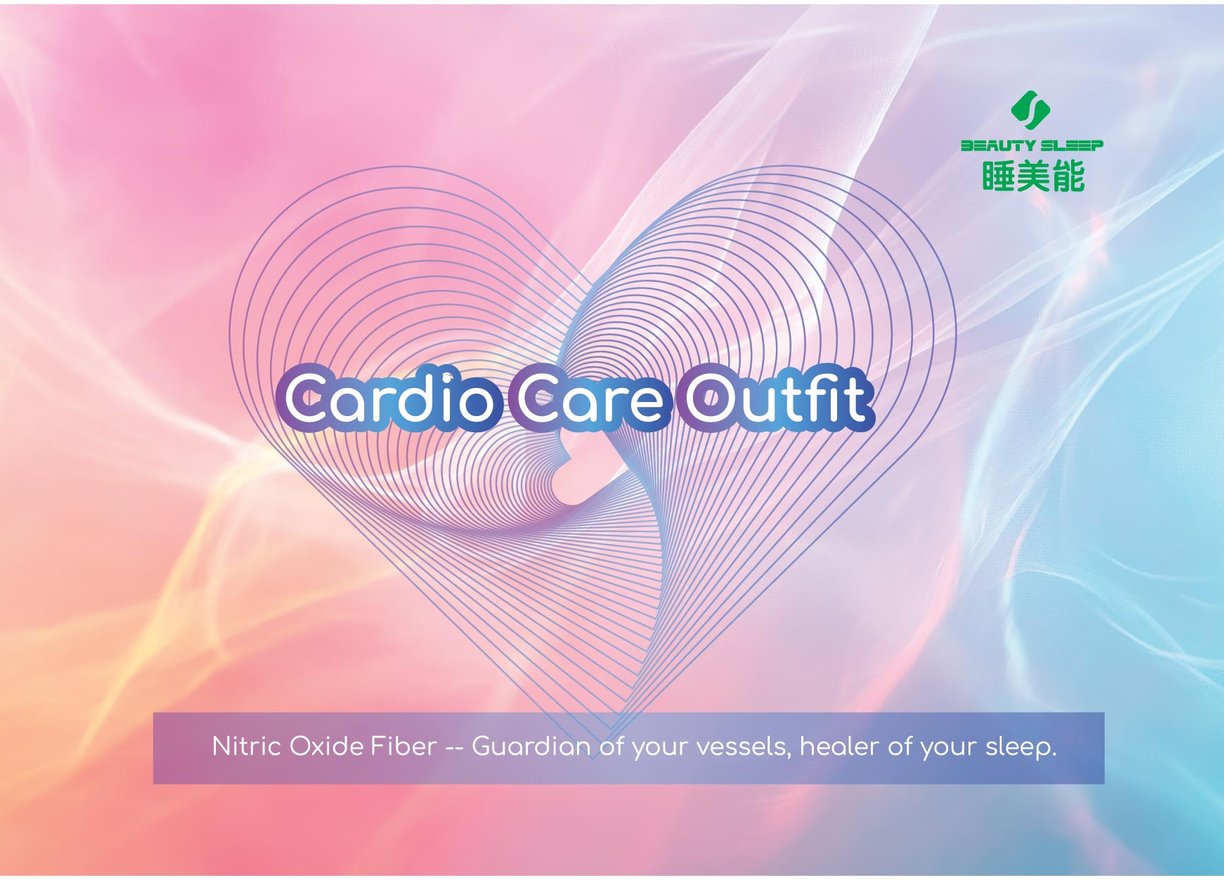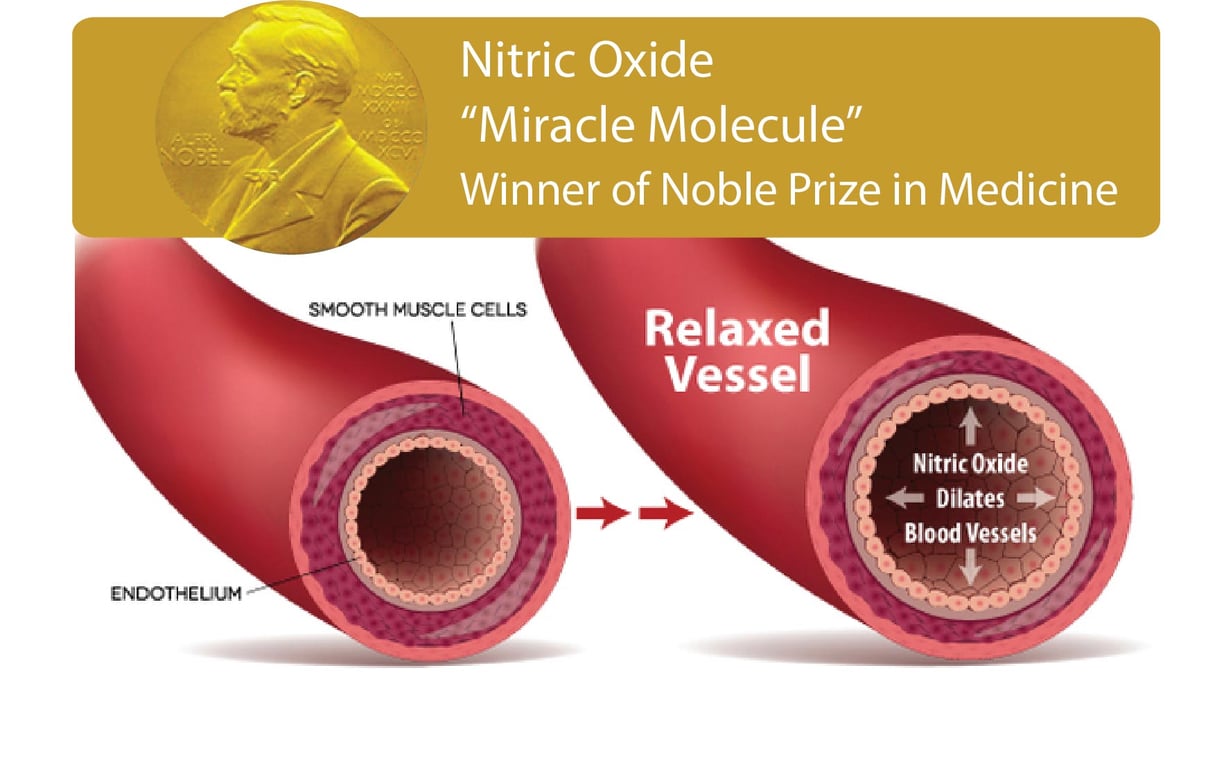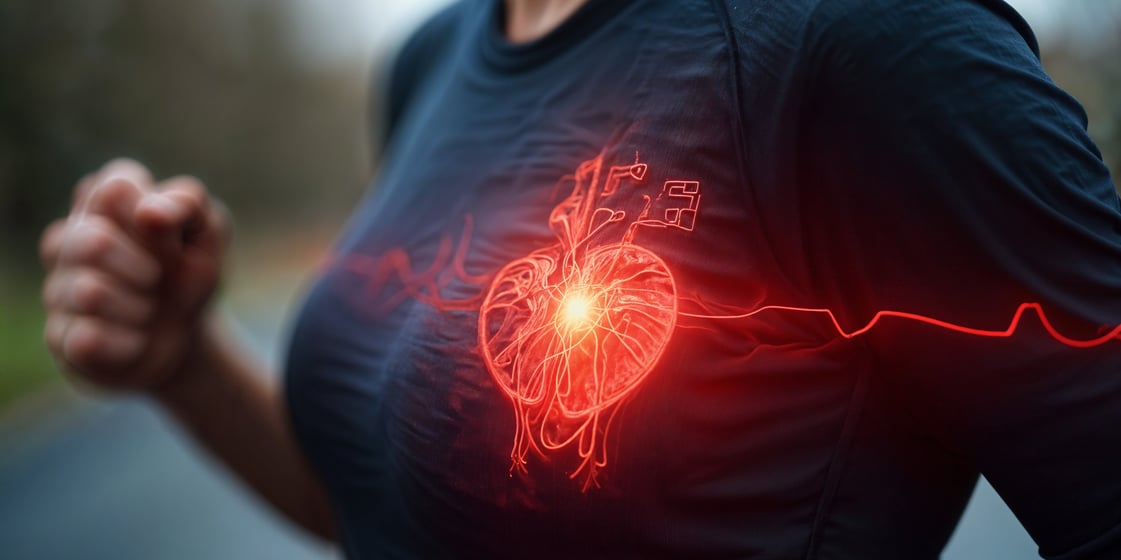

Cardio Care Outfit with Nitric Oxide, a garment that awakens the deep rhythm of life within. National research institutes have confirmed that this fabric can increase nitric oxide concentration by 3.31 times, infusing the heart with renewed beats, opening the chapters of vascular regeneration, and weaving a serene dreamscape for sleep.
Nitric oxide, like a gentle breeze caressing the stars at night, softly expands blood vessels, allowing blood to flow like a symphony, carrying oxygen, dispelling fatigue, and giving every heartbeat a steady, powerful rhythm. This is the heart’s monologue and the poetry of the blood — a piece of clothing and a revolution in deep healing.
In the still of the night, nitric oxide gently guards the edge of your dreams. It soothes the autonomic nervous system, calming the day’s worries and anxieties, opening the gates to deep sleep, turning the dreamland into a haven of restoration. In the coolness of midnight, the fabric quietly caresses the skin like moonlight, soft and subtle, allowing a tired body to find peace among molecules.
When daylight comes, every stretch and every breath are renewed in the embrace of nitric oxide, restoring the brilliance of life. It’s not just a piece of clothing, but a profound medical poem — a journey of healing for the heart, blood vessels, and sleep. A miracle of technology, worn close to the body, cherishing every inch of life.
Cardio Care Outfit with Nitric Oxid — the fusion of technology and tenderness, accompanying you through day and night, comforting the heart, nourishing the vessels, and mending the fractures of dreams. Let health and beauty quietly blossom between molecules, weaving an everlasting poem for every tomorrow.


Nitric Oxide: From Nobel Prize to Therapeutic Triumph
In 1998, the Nobel Prize in Physiology or Medicine was awarded to Robert F. Furchgott, Louis J. Ignarro, and Ferid Murad for their groundbreaking discoveries concerning nitric oxide (NO) as a signaling molecule in the cardiovascular system. This momentous recognition underscored the profound impact of NO on our understanding of how blood vessels relax and regulate blood pressure. NO was initially considered a simple environmental pollutant, but research revealed its essential role as a vasodilator produced by the endothelium, which helps regulate vascular tone and blood flow.
Since the Nobel-winning discovery, nitric oxide has revolutionized modern medicine. Therapeutically, it is now recognized as a versatile molecule with wide-ranging benefits. In cardiovascular medicine, NO donors are used to manage conditions like angina and pulmonary hypertension, leveraging its vasodilatory effects to enhance blood flow and reduce cardiac workload. Moreover, NO’s role extends beyond vasodilation: it modulates platelet aggregation, inhibits smooth muscle proliferation, and acts as a neurotransmitter, contributing to both cardiovascular and neurological health.
Recent research has expanded its therapeutic potential into wound healing, where NO promotes angiogenesis and accelerates tissue repair. In the immune system, NO exhibits antimicrobial properties, playing a critical role in the defense against pathogens. Additionally, its regulatory effects on inflammation and oxidative stress position it as a promising agent in managing chronic diseases.
The Nobel Prize for nitric oxide’s discovery marked a new era in medicine, highlighting its significance in cardiovascular health and beyond. Today, ongoing research continues to unlock NO’s full therapeutic potential, offering hope for innovative treatments across a spectrum of diseases.


Nitric oxide (NO) is a crucial signaling molecule in the human body, playing a vital role in cardiovascular health. Produced primarily by endothelial cells, NO relaxes vascular smooth muscle, leading to vasodilation, reduced blood pressure, and improved blood flow. This mechanism has been effectively harnessed in clinical medicine.
In cardiovascular disease management, the discovery of nitric oxide has directly led to the development of nitrate-based medications. Drugs such as nitroglycerin, isosorbide dinitrate, and sodium nitroprusside have become mainstays in treating angina pectoris, acute heart failure, and hypertensive crises. These medications release NO or its precursors, thereby dilating blood vessels, enhancing oxygen delivery to the heart, and reducing cardiac workload.
Additionally, nitric oxide’s ability to inhibit platelet aggregation prevents clot formation, which is crucial in reducing the risk of atherosclerosis and heart attacks. NO also diminishes inflammation within the vascular endothelium, helping to preserve arterial elasticity and slowing the progression of atherosclerotic disease.
Within the heart itself, nitric oxide provides significant protection against ischemia-reperfusion injury, maintaining myocardial cell metabolism and contractile function. It also helps regulate cardiac rhythm, preventing arrhythmias. Clinically, many NO-based medications have been formulated into various delivery systems, including sublingual tablets, transdermal patches, and intravenous infusions, offering patients a range of therapeutic options.
Beyond cardiovascular diseases, inhaled nitric oxide has been approved for treating pulmonary hypertension, especially in newborns, underscoring its versatile therapeutic applications.
In summary, nitric oxide is not only a key physiological vasodilator but has also been successfully translated into numerous medications that significantly benefit cardiovascular health. Its established clinical use has improved the lives of countless patients worldwide by effectively treating heart and vascular conditions.
